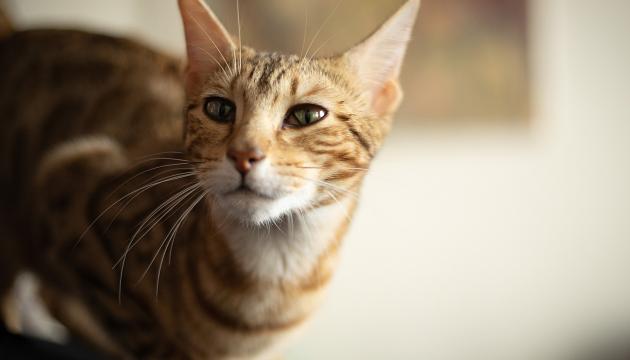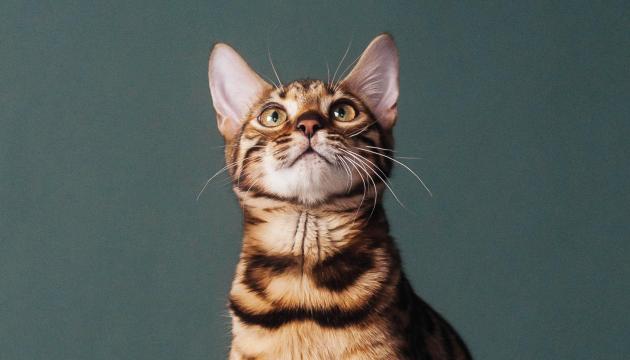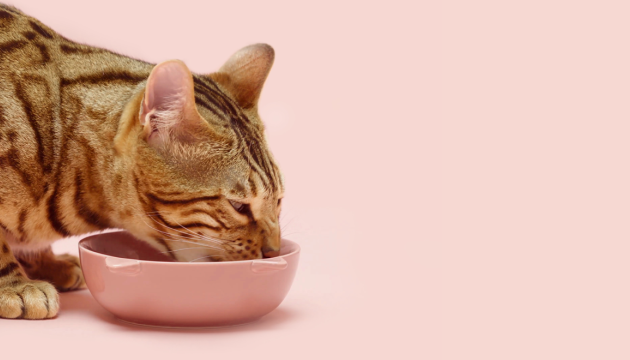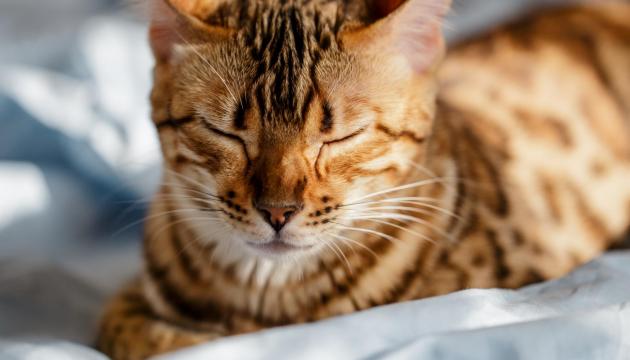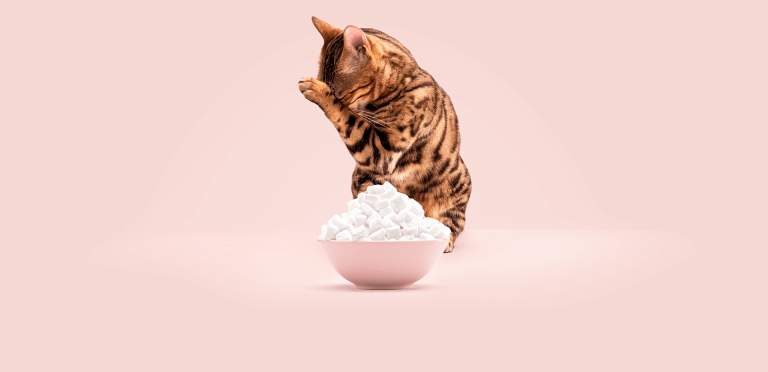

Sugar-free cat food – Why is it a better choice?
Sugar-free cat food means cat food that does not contain added sugar. According to our consumer research, nearly half of Finnish cat owners consider the absence of sugar in cat food important. However, many wet cat foods contain added sugar.
Sugar-free cat food is a better option for your cat, as the most important nutrients for a cat are water, protein, and fat. A cat does not need sugar or other carbohydrates in its diet. Read this article to understand why you should choose sugar-free cat food for your cat and what switching to a sugar-free diet requires.
What harm does added sugar cause to a cat?
Digestive problems: A cat is an obligate carnivore.
- The digestive tract of cats is relatively short, about two metres, which is typical for obligate carnivores.
- Cat saliva does not contain the amylase enzyme, which, for example, herbivores use to start breaking down starch.
A diet high in carbohydrates, such as sugar, starch, or fibre, can lead to digestive problems like diarrhoea, vomiting, and bloating.
Obesity is the most common feeding mistake in pet cats.
Overweight: Excessive carbohydrate intake can promote weight gain and obesity in cats. Fat and certain amino acids activate enzymes that regulate eating and increase the feeling of fullness. Therefore, a diet high in protein and sufficient fat makes a cat feel fuller with less amount of food compared to consuming a carbohydrate-rich diet.
Cats' blood sugar levels also remain lower when their diet consists of high-protein and low-carbohydrate food.
Overweight cats have up to a fourfold risk of diabetes compared to normal-weight cats. Read what to consider when feeding an overweight cat!
Urinary stones: When cats eat a diet high in carbohydrates and low in protein, their urine excretes four to five times more oxalate, which can combine with calcium to form calcium oxalate stones.
Oral health problems: Sugar is not good for a cat's oral health. Sugar is believed to stick to cats' teeth and gums, where it can promote tooth decay and gum disease, providing an ideal breeding ground for harmful bacteria.
PrimaCat products do not contain any added sugar or wheat. Our cat food recipes are based on the main principles of cat nutrition, the most important of which is a high amount of animal protein.
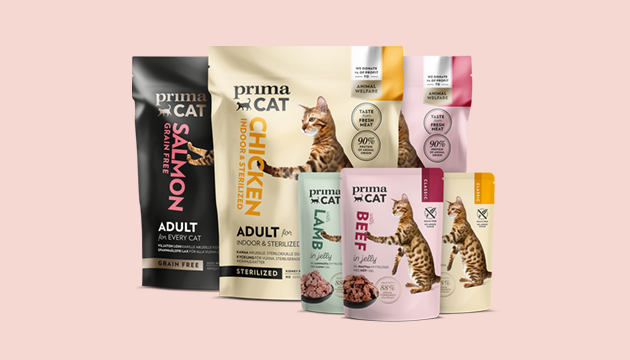
Particular attention should be paid to the diet of sterilised or neutered indoor cats, as neutered cats tend to gain weight. Read more about feeding a neutered or spayed cat.
What does switching to a sugar-free diet require?
Studies have shown that cats can taste salty, sour, and bitter, but not sweet flavours. However, added sugar can alter the other flavours and the smell of the food that a cat tastes.
Sugar-free cat food may require adjustment not only from the cat but also from the cat owner. Added sugar caramelises when heated, giving wet food a beautiful, human-eye-pleasing brown hue. Sugar-free wet cat food often remains pale or the colour of the meat it contains, which may not look as appealing and can surprise an unaccustomed cat owner. The smell of sugar-free cat food is also different from food containing added sugar.
An adult cat will get used to a sugar-free diet, but favour sugar-free cat food already with kittens, as the foundation for adult health is laid during the first year of a kitten's life.
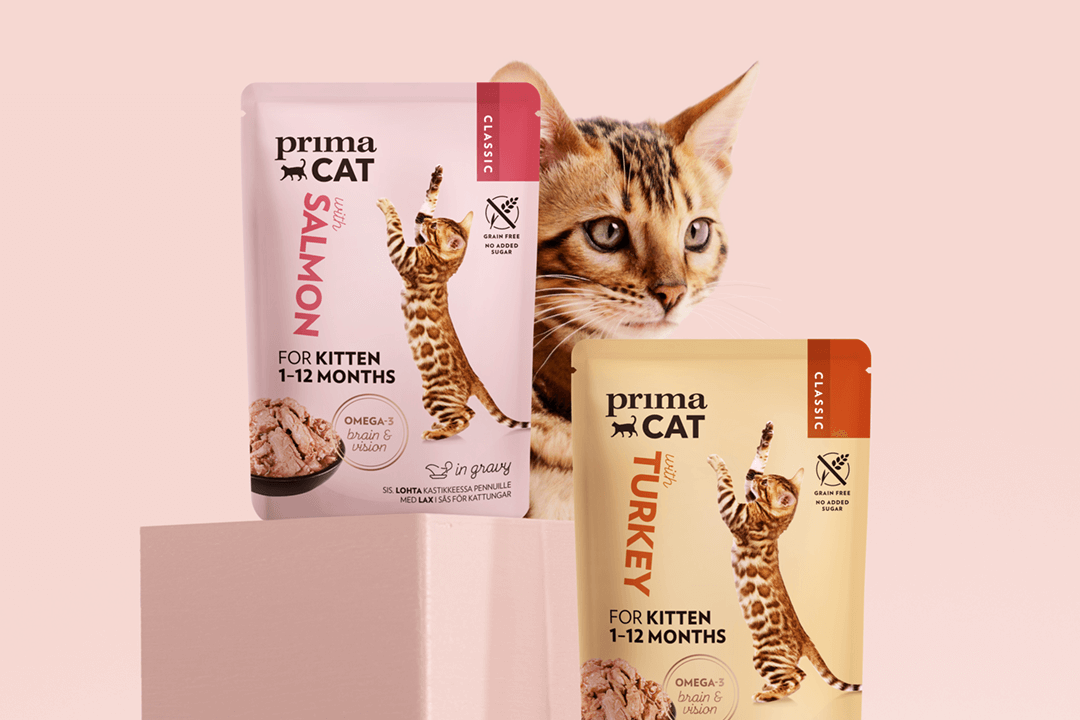
When the food tastes and smells different than before, switching to sugar-free cat food may not happen overnight. However, the change is worth it, as the best result can be several more years with your silky-pawed friend.
A cat is also a so-called generalist predator, meaning it adapts to the food available in its environment, and habit often guides a cat's taste preferences. Sugar-free food will become part of the cat's accustomed diet over time. Check out our tips for changing your cat's food!
Do you already know the most important nutrients for a cat? Learn from our article what nutrients a cat needs from its food, and the benefits and drawbacks of meal feeding and free feeding. Explore!
Sources and further reading for those interested
Anturaniemi, J., Heikkinen, E., Ylikorpi, P., Florio, J., Docendo, & Florio, J. (2024). What to put in the cat's bowl?: Individual feeding throughout life. Docendo.
Li, Xia, Li, Weihua, Wang, Hong, Bayley, Douglas L., Cao, Jie, Reed, Danielle R., Bachmanov, Alexander A., Huang, Liquan, Legrand-Defretin, Véronique, Beauchamp, Gary K. & Brand, Joseph G. (2006) Cats Lack a Sweet Taste Receptor. The Journal of Nutrition 136(7 Suppl): 1932S–1934S.
